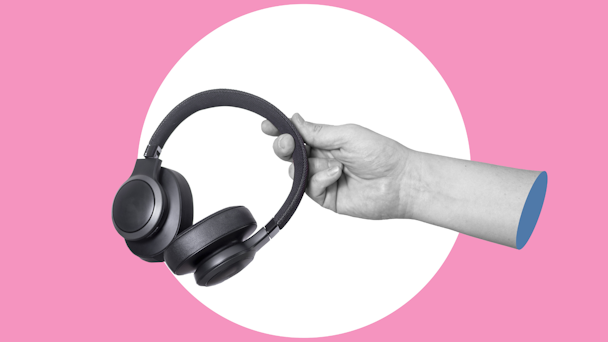Digital audio is no longer a sleeping giant
Streaming audio’s data-enabled inventory, seamless ad experience, diverse audience and scale present a golden opportunity for digital advertisers, writes TransUnion’s Julie Clark.

/ Adobe Stock
The streaming revolution is here – and it’s not just televised.
With the proliferation of smart speakers and audio devices in the home, and the convenience of listening on the go, more listeners are streaming audio than ever before. Audio's ability to provide ad-supported content to highly engaged, digital-first consumers has media buyers listening.
But what makes streaming audio so special? And how can advertisers use its unique qualities (and navigate its all-too-familiar challenges) to drive successful campaign outcomes? Let’s dive in.
Advertisement
Digital audio has truly massive reach
Here’s a quick thought experiment: Try to think of a connected device that’s been released in the last five years that can’t be used to listen to streaming audio. Harder than it sounds, right?
From smartphones to smart fridges, streaming audio is everywhere. Data from eMarketer shows nearly 75% of internet users are listening to digital audio – that’s roughly two-thirds of the US population. All those people aren’t casual listeners. In 2023, US adults will spend an average of one hour and 43 minutes per day listening to digital audio, fully one-fifth of their daily digital media time. That time spent is second only to digital video.
Advertisement
With saturation like that, it should come as no surprise overall growth is beginning to even out (there are, after all, only so many people in the US). This is clear evidence digital audio is no longer a niche channel – it’s mainstream.
All this becomes even more important when we look at who those listeners are: 89% of Gen Z and millennials are expected to listen in to streaming audio this year, and 55% have listened to a podcast in the last 30 days. This is massive penetration in the 20-something, tech-savvy age cohort that has historically been highly sought after by advertisers.
Taken together, the numbers don’t lie: The massive reach of digital audio shows as a channel, it’s not just here to stay – it’s here to grow.
Suggested newsletters for you
Listeners are anything but passive, especially with podcasts
Broad reach is one thing, but without engaged consumers in that pool, it’s hard for advertisers to justify the effort of creating messaging that might just fade into the background. Luckily, data shows digital audio listeners are actually, well… listening.
Listeners turn to digital audio – and specifically, podcasts – to keep their minds and imaginations active while engaging with otherwise mundane activities like commutes, household chores or walks with the family pet. In this way, the entertainment medium (in this case, the podcast) takes center stage: There’s a reason the dashboard and smartphone are the most-used devices for podcast consumption.
Unlike switching on a living room TV to “just have something on,” consumers press play on their preferred podcasts to specifically engage with them. And they engage with them a lot: US weekly podcast listeners listen to nine podcasts in a week and are highly likely to listen to all or most of each episode they turn on.
Taking that a step further, this means listeners are highly tuned into advertising. Podcasting (and, by extension, digital audio) is anything but a passive channel: Based on data from a study from National Public Media and Edison Research, 65% of podcast listeners don’t skip ads. Couple that with the fact brand recall is significantly higher for digital audio than other channels and you have a picture of an audience that’s both highly engaged and also highly receptive to advertising messages.
Identity unlocks the true potential of streaming audio
Digital audio may be one of the fastest-growing advertising channels in the US, but in many ways, it faces the same challenges that have plagued the streaming industry since its inception. Foremost among these is the struggle to connect disparate signals across devices, programs and platforms. All those stats around device ownership and listening time don’t much matter if advertisers don’t have an accurate picture of who they’re trying to reach.
For advertisers to materially take advantage of the reach opportunity presented by digital audio, they need the right identity solution.
Because the devices consumers are using the most to stream their favorite audio programs (like mobile devices, smart speakers and in-car entertainment systems) have not historically used legacy identifiers; the traditional strategies for connecting households to devices just don’t work. And even where traditional identifiers are in use (i.e., the RSS feeds used by most podcasts), continued signal loss and the impending deprecation of the cookie mean strategies will still have to adapt.
Identity solutions built for this streaming landscape need to keep this in mind in order to make digital audio inventory fully addressable. Moreover, advertisers should take a close look at the scale and accuracy of available identity solutions. That’s because, without a solution that can reach most streaming households, it’ll be difficult for advertisers to really capitalize on the reach of streaming audio.
Streaming audio has incredible promise for advertisers – its broad reach across highly engaged users makes that clear. And with the right identity solution in place, advertisers can realize that potential and reach users where they’re listening to the most.
Julie Clark is senior vice-president of diversified markets, media & entertainment at TransUnion.
